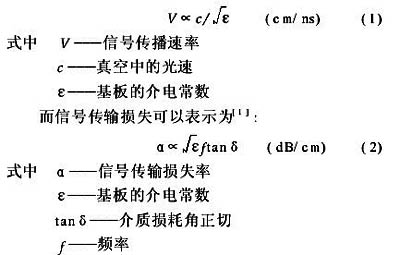Abstract : A comprehensive review of the resin matrices used in high-frequency printed circuit boards, such as cyanate esters, polyphenylene ether, polytetrafluoroethylene, polyimides, and their modified systems, points out their respective characteristics and deficiencies. And prospects for the possible development of the resin matrix for high-frequency printed circuit boards.
Keywords :high frequency printed circuit board; cyanate ester; polyphenylene ether; polytetrafluoroethylene; polyimide
Computers, mobile communications, networks, etc. have gradually penetrated into every corner of society and people’s lives. Human life is steadily moving toward a highly informatized direction. Information processing and information and communications constitute highly informatized scientific and technological fields. Big technical pillar. The information processing technology based on high-level electronic computers pursues the speeding up of information processing, the increase of memory capacity, and the miniaturization of volume; the pursuit of multi-channel number of information and communication technologies represented by mobile phones, satellite communications, and Bluetooth technology. With high performance and versatility, the frequency of use continues to increase, entering high-frequency and even ultra-high frequency fields. Their development has promoted the renewal of excellent high-frequency circuit board copper clad laminates and the development of their corresponding materials (such as resin matrices). In this paper, the resin matrix suitable for high-frequency printed circuit board copper clad laminates is reviewed.
1 The frequency of the high-frequency printed circuit board on the resin substrate is in the range of 300 MHz or more and is generally referred to as high frequency. Generally, in a high-frequency circuit, the propagation rate of the electrical signal in the wire on the printed circuit board can be expressed as:

The consumption tangent substrate can reduce signal delay and transmission loss, improve signal propagation rate and transmission efficiency, and is an ideal material for high-frequency printed circuit boards. The dielectric properties of the substrate are determined by the resin matrix and the reinforcing material. Generally, the dielectric constant of the substrate is approximately consistent with the mixing law:

When the reinforcement material is certain, the dielectric properties of the resin matrix have a decisive effect on the dielectric properties of the copper clad laminate. Therefore, the resin matrix used in high-frequency circuit boards must have excellent dielectric properties—low dielectric constant and low dielectric loss tangent. At the same time, as the resin matrix of high-frequency printed circuit boards, there are also high requirements for their mechanical properties and thermal properties.
At present, the resin matrix used in circuit board copper clad laminates includes epoxy resin, polyphenylene oxide resin and modified polyphenyl ether resin, polyimide resin, polytetrafluoroethylene resin, cyanate ester resin, and BT resin. Among them, cyanate ester resins, polyimide resins, polyphenylene ether resins, and polytetrafluoroethylene resins are widely used in high-frequency circuit board copper clad laminates. Table 1 shows the mechanical, thermal, and dielectric properties of some high-performance resin matrices.

It can be seen from Table 1 that bismaleimide resin, polyimide resin and cyanate ester resin have obvious advantages when applied to high-frequency circuit board copper clad laminates. The cyanate ester resin not only possesses properties similar to those of bismaleimide, but also has the equivalent of epoxy resin and is more competitive in the application of high-frequency printed circuit boards.
(to be continued)
Stainless Steel Tray,Stainless Tray,Ss Tray,Stainless Steel Serving Trays
Hebei Boxin Rehabilitation Equipment Co., Ltd , https://www.boxinnursingbed.com